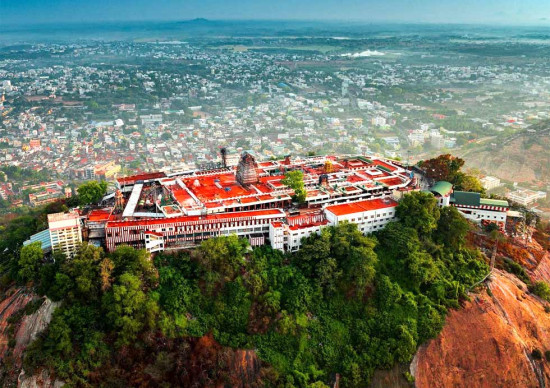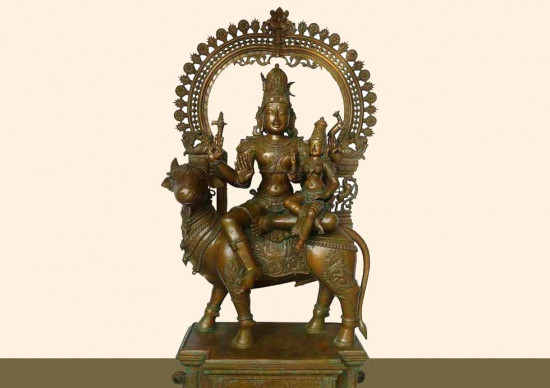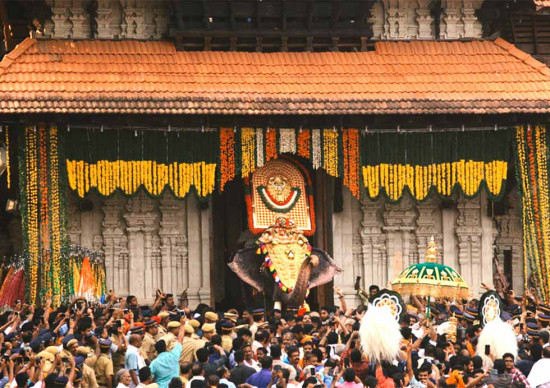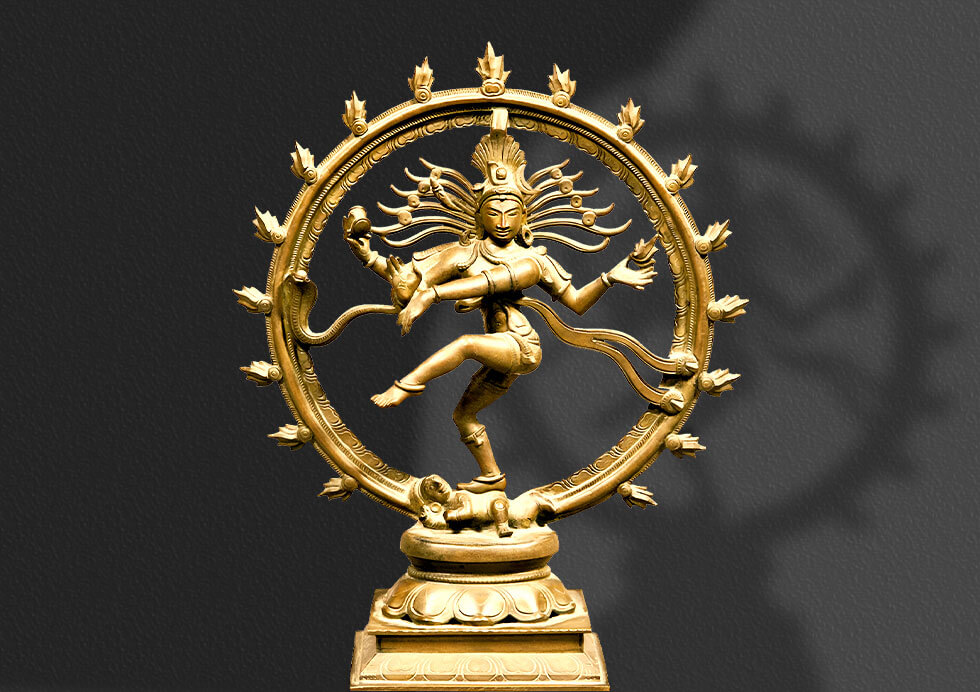
Historical Background

Symbolism of the Nataraja Statue
The Nataraja statue is a profound symbol of cosmic rhythm and divine energy. Every element of the statue has a specific meaning, contributing to its depth and significance.
- Ananda Tandava (Dance of Bliss): The statue depicts Shiva performing the Ananda Tandava, a dance that represents the cosmic cycles of creation and destruction. This dance symbolizes the eternal rhythm of the universe.
- The Drum (Damaru): In Shiva's upper right hand, he holds a drum (damaru), symbolizing the sound of creation and the passage of time. The beat of the drum represents the continuous process of creation, emanating the sacred sound 'AUM,' which is believed to be the sound of the universe.
- The Flame (Agni): In his upper left hand, Shiva holds a flame, representing destruction and transformation. This flame signifies the dissolution of the universe, making way for new creation.
- Abhaya Mudra: Shiva's lower right hand is raised in the abhaya mudra, a gesture of protection and reassurance, symbolizing the dispelling of fear and granting of blessings.
- Gaja Hasta: The lower left hand points towards the raised left foot, signifying refuge and liberation from the cycle of birth and death.
- The Raised Foot: Shiva's raised left foot symbolizes the path to salvation and liberation, encouraging devotees to seek spiritual enlightenment.
- The Demon Apasmara: Beneath Shiva's right foot lies the demon Apasmara, representing ignorance and ego. Shiva's act of crushing the demon signifies the triumph of knowledge over ignorance.
- The Circle of Fire (Prabhamandala): Surrounding Shiva is a circle of fire, symbolizing the cosmic cycle of birth, death, and rebirth. This circle represents the universe and the perpetual motion of time.
Artistic Brilliance
The Nataraja Bronze Statue is not only a religious icon but also a testament to the artistic excellence of Indian sculptors. The Chola artisans achieved a perfect balance between form and expression, capturing the dynamic motion of the dance while maintaining the serene and composed demeanor of Shiva. The intricate detailing, fluidity of movement, and graceful proportions make the Bronze Nataraja statue the best representation of Indian art.
- Intricate Detailing:The Nataraja statue is renowned for its intricate detailing, from the elaborate headdress and jewelry to the delicate features of Shiva's face. Every element is meticulously crafted, reflecting the skill and precision of the artisans.
- Fluidity of Movement:The statue captures the dynamic motion of the dance, with Shiva's flowing hair, outstretched limbs, and the rhythmic grace of his posture. This sense of movement is a hallmark of the Chola bronze sculptures, showcasing the artists' ability to convey energy and vitality.
- Graceful Proportions:The proportions of the Bronze Nataraja statue are meticulously balanced, with a harmonious blend of symmetry and asymmetry. The depiction of Shiva's body, with its elegant curves and poised stance, exemplifies the ideal of divine beauty in Indian art.
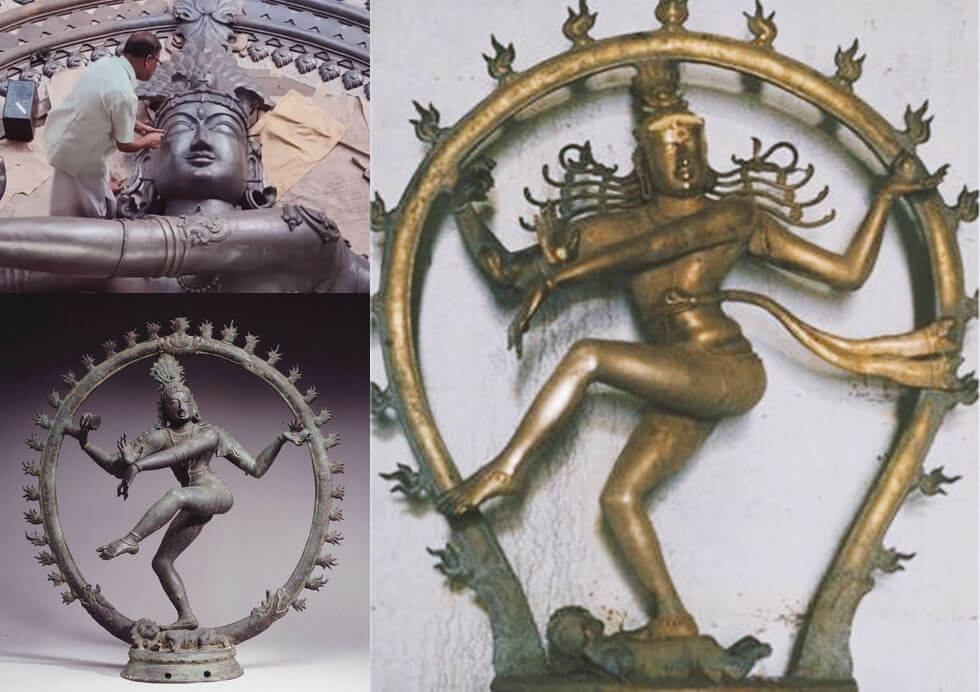
Cultural and Religious Significance
The Nataraja statue holds immense cultural and religious significance in Hinduism. It is not only an object of veneration but also a representation of profound philosophical concepts.
- Symbol of Cosmic Balance: The Nataraja statue embodies the concept of cosmic balance, illustrating the interplay between creation, preservation, and destruction. This balance is central to Hindu cosmology, emphasizing the cyclical nature of the universe.
- Representation of Shiva's Dual Nature: The statue captures the dual nature of Shiva as both a fierce destroyer and a benevolent creator. This duality is a recurring theme in Hindu mythology, reflecting the complexity of the divine.
- Focus of Devotion: The Nataraja statue is a focal point of devotion for millions of Hindus. It is often placed in temples and homes, where devotees offer prayers and perform rituals to seek blessings and spiritual enlightenment.
- Inspiration for Art and Literature: The Nataraja statue has inspired countless works of art, literature, and dance. It is a recurring motif in Indian classical dance forms, such as Bharatanatyam, where dancers recreate the cosmic dance of Shiva.
Global Influence and Recognition
The Nataraja statue has transcended cultural boundaries, earning recognition and admiration worldwide. Its profound symbolism and artistic brilliance have made it an iconic representation of Indian culture and spirituality.
- Presence in Museums and Galleries: The Nataraja Bronze Statue is featured in prominent museums and art galleries around the world, including the Metropolitan Museum of Art in New York and the British Museum in London. These institutions showcase the statue as a masterpiece of ancient Indian art.
- Academic Study and Research: The Nataraja statue has been the subject of extensive academic study and research, with scholars exploring its historical, cultural, and artistic significance. This research has contributed to a deeper understanding of Indian art and philosophy.
- Cultural Diplomacy: The Nataraja statue has been used as a symbol of cultural diplomacy, representing India's rich artistic heritage in international forums. It serves as a reminder of India's contributions to global art and culture.

